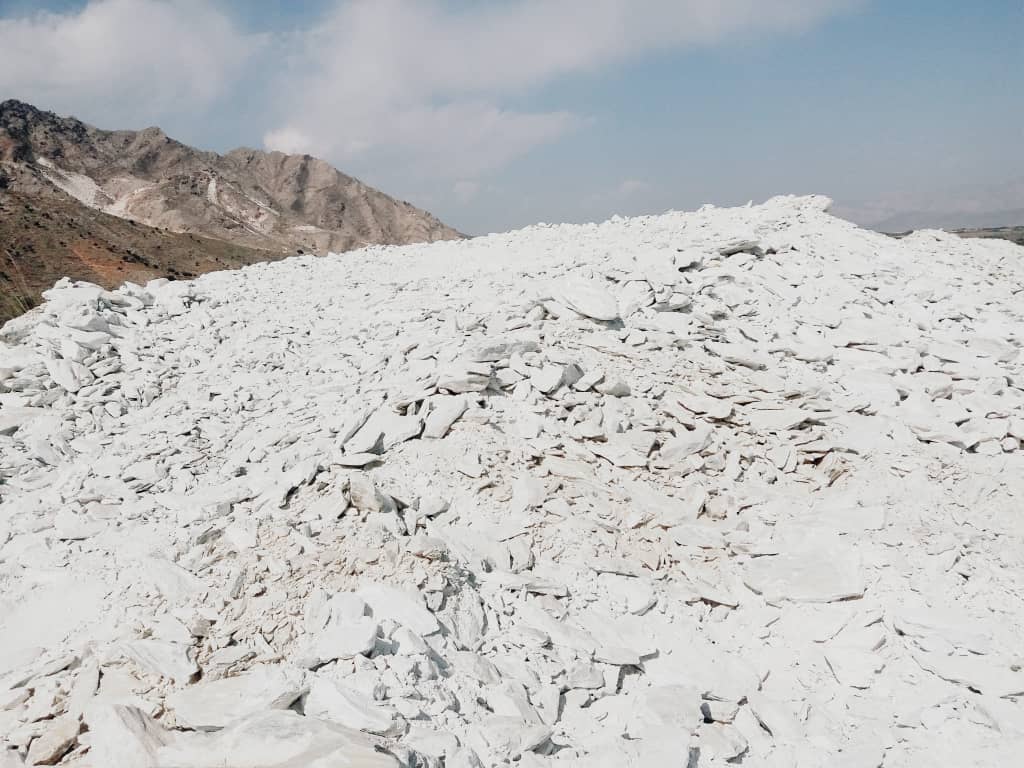High Whiteness Talc Lumps
We offer High Whiteness Talc and High Brightness Talc Lumps from Pakistan. We offer 1000mt to 5000 mt per month to worldwide.
Talc is used in many industries, including paper making, plastic, paint and coatings (e.g. for metal casting molds), rubber, food, electric cable, pharmaceuticals, cosmetics, and ceramics. A high-talc rock is soapstone or steatite, used for stoves, sinks, electrical switchboards, etc. It is often used for surfaces of laboratory table tops and electrical switchboards because of its resistance to heat, electricity and acids.
In finely ground form, talc finds use as a cosmetic (talcum powder), as a lubricant, and as a filler in paper manufacture. It is used to coat the insides of inner tube and rubber gloves during manufacture to keep the surfaces from sticking. Talcum powder, with heavy refinement, has been used in baby powder, an astringent powder used to prevent diaper rash. It’s recommended that parents not use baby powder because it poses a risk of respiratory problems, including breathing trouble and serious lung damage if the baby inhales it. The small size of the particles makes it difficult to keep them out of the air while applying the powder. Zinc oxide -based ointments are a much safer alternative.
It is also often used in basketball to keep a player’s hands dry. Most tailor’s chalk, or French chalk, is talc, as is the chalk often used for welding or metalworking.
Talc is also used as food additive or in pharmaceutical products as a gildin0067. In medicine, talc is used as a pleurodesis agent to prevent recurrent pleural effusion or pleumotherex. In the European Union, the Additive Number is E553b.
Talc may be used in the processing of white rice as a buffing agent in the polishing stage.
Due to its low shear strength, talc is one of the oldest known solid lubricants. Also a limited use of talc as friction-reducing additive in lubricating oils is made.[12]
Talc is widely used in the ceramics industry in both bodies and glazes. In low-fire art-ware bodies, it imparts whiteness and increases thermal expansion to resist crazing. In stonewares, small percentages of talc are used to flux the body and therefore improve strength and vitrification. It is a source of MgO flux in high-temperature glazes (to control melting temperature). It is also employed as a matting agent in earthenware glazes and can be used to produce magnesia mattes at high temperatures.
ISO standard for quality (ISO 3262)
| Type | Talc content min. wt% | Loss on ignition at 1000 °C, wt % | Solubility in HCl, max. wt % |
| A | 96 | 4 – 6.5 | 5 |
| B | 90 | 4–9 | 10 |
| C | 70 | 4–18 | 30 |
| D | 50 | 4–27 | 30 |
Patents are pending on the use of magnesium silicate as a cement substitute. Its production requirements are less energy-intensive than ordinary Portland Cement (at a heating requirement of around 650 °C for talc compared to 1500 °C for limestone to produce Portland cement), while it absorbs far more Carbon Dioxide as it hardens. This results in a negative Carbon Footprint overall, as the cement substitute removes 0.6 tonnes of CO2 per tonne used. This contrasts with a positive carbon footprint of 0.4 tonne per tonne of conventional cement.[13]
Talc is used in the production of the materials that are widely used in the building interiors such as base content paints in wall coatings. Other areas that use talc to a great extent are organic agriculture, food industry, cosmetics, and hygiene products such as baby powder and detergent powder.
Sterile talc powder
| Chemical Specifications of Talc Lumps | |
| SiO2 | 60% min |
| MgO | 30% min |
| CaO | 0.50% max |
| Al2O3 | 0.50% max |
| Fe2O3 | 0.50% max |
| LOI at 1050c | 5% max |
| Water Soluble Chloride | 0.03% max |
| Whiteness Ry | 98% max, 92%min |
| Brightness | 98% max, 92%min |


